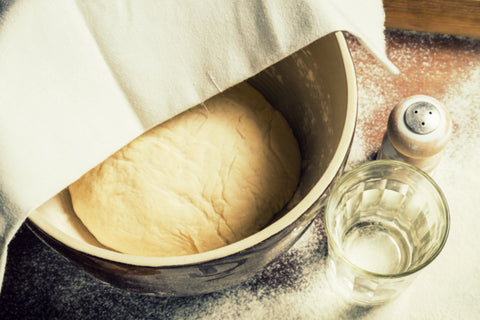
Sourdough cultures have been credited with keeping the Pioneers alive as they traveled across country to start a new life in the West. They carried with them very little in fermentation supplies – accounts of flour sacks, molasses jars, and salt pork telling the tale. I have always enjoyed reading of this time period, as I think it gives some great perspective. But you don’t have to go much further than the Little House on the Prairie series to hear how one or two meals of pancakes and salt pork a day made up a good part of the diet while traveling. And those pancakes were often made with the sourdough starter the family carried with them. It makes sense to me. If you’re going to subsist mostly on flour products, then fermenting them first – both for nutrition and taste – makes a great deal of sense. Back then, if a sourdough starter wasn’t given to you by a friend who had already established one, then you were going to have to make one yourself. It’s certainly not complicated, but it does take a bit of dedication, and it might surprise you a bit that we’re not just catching yeast from the surrounding air.

One of the things that I read when I first started down the sourdough path was that to make a starter at home you simply catch the yeast and bacteria in the air. That made sense to me. There is, most likely, yeasts of all varieties in our homes and in our environment and in our bodies. But, in digging further into this process, I found that people were finding over and over again that a freshly milled whole grain almost always produced a decent resulting starter while any sort of bleached, refined flours weren’t as consistent. The difference was not in the atmosphere and the yeasts, as many of these people tried both tactics. The difference was in the flour, namely the microorganisms in it. If flour has simply been sifted after grinding, then it will most likely contain all of the lovely microorganisms we are trying to encourage just as a whole grain flour will. So, try to find the most alive flour you can – freshly ground, unbrominated, unbleached, etc. Another important ingredient, the only other ingredient, in fact, is water. Again, try to use the least chemical-imbued water you can find. Tap, unchlorinated, filtered of chemicals, etc.

- Mix 1/4 cup water with a little bit more flour, whisk briskly to incorporate air, cover with a breathable towel or cloth, and leave in a warm place for 12 hours.
- After 12 hours feed according to step number one: 1/4 cup water + a bit more than 1/4 cup of flour.
- By this time you’ll need to remove some of your starter before feeding, simply because your container isn’t large enough to contain it all. Remove a bit of starter every 12 hours, feed it as indicated above, and watch it grow.
- Continue this process for 3-7 days, or until you are satisfied that your starter is quite active, reliable, and happy.
- Use your starter as needed or place in the refrigerator to extend time between feedings.
















